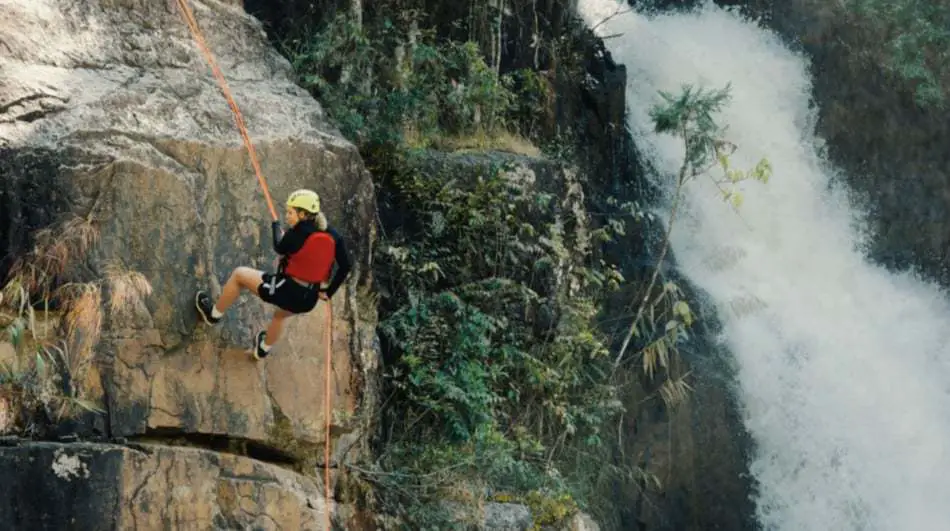
Rappelling isn’t just for getting down from the top of a climb. It’s a unique activity of its own that, when used correctly, can take you to some pretty cool places.
So, what is waterfall rappelling? Waterfall rappelling is the act of lowering yourself through or near a waterfall during the rappel, using the feel of the rushing water to add to the experience of your rappel. It’s very common in countries such as Costa Rica or Hawaii, and often is necessary on canyoneering trips.
A waterfall rappel is a rappel in which you, intentionally or unintentionally, lower yourself through the rushing water of a falls. Sometimes it’s done as its own activity, to get a taste for rappelling in different environments; other times it’s done as an extension of something else, such as a canyoneering trip. The appeal of waterfall rappelling is the extra intensity that it adds to your rappel: the force of the water pounding down around you while you lower yourself in to space is an exhilarating feeling.
In this article, I talk a little more about the situations in which you might need to do a waterfall rappel and how to best prepare for it.
Waterfall Rappelling: A Guide
So, now that you know what a waterfall rappel is, you may be wondering: what’s the point of even going?
Unlike a normal rappel, which is often just performed as a an extension of other activities (such as climbing or caving), waterfall rappelling is an activity of its own. It’s an experience that can take up to a full day and will create memories that will last a life time.
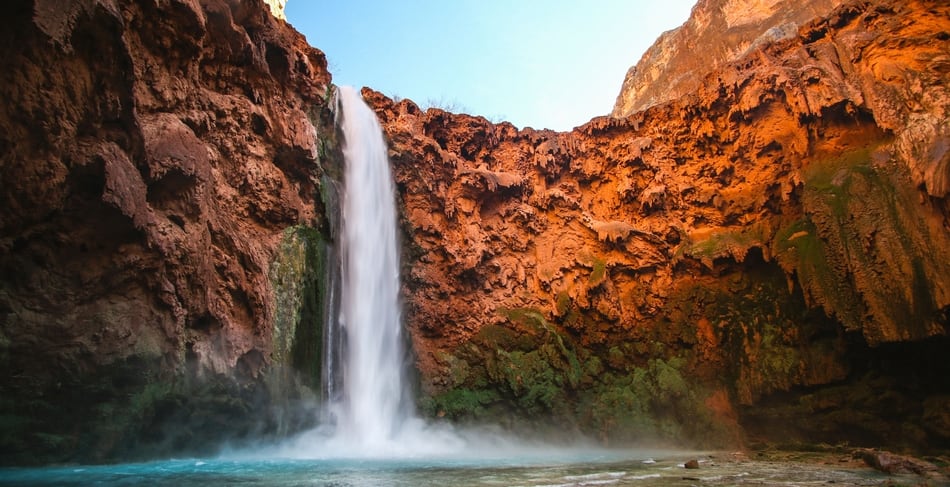
First of all, a waterfall rappel isn’t just a rappel. Usually it involves a hike in through some pretty exotic terrain— such as the rain forests of Cost Rica— that will allow you to appreciate the beauty of nature. There will also be opportunities for climbing, scrambling, and socializing along the way. You will get to see the terrain from the bottom, hike up near the top of it, and set up the rappel in a proper, safe fashion.
Furthermore, waterfall rappelling can be used in conjunction with other activities to create an unforgettable adventure. When canyoneering you may perform several waterfall rappels in succession. Canyoneering is an activity where you weave your way down the length of a canyon, traversing through rivers and lowering off of cliffs until you reach the bottom.
So where are the best places to waterfall rappel? Perhaps the most famous destination is Costa Rica. With its strong tourist scene, beautiful jungles, and warm water, Costa Rica is an exotic getaway that’s almost built for waterfall rappelling. Other countries, such as Hawaii and the Philippenes, offer the same benefits.
However, the reality is that you don’t need an exotic getaway to go waterfall rappelling. All you need is the proper gear, a couple of good anchors, and a waterfall to lower yourself down.
Waterfall Rappels vs Normal Rappels
As stated above, waterfall rappelling is a form of rappelling, and so many of the skills needed for a rappel will also serve you for a waterfall rappel. There are, however, some unique challenges that come with waterfall rappelling that you should be aware of before you attempt one.
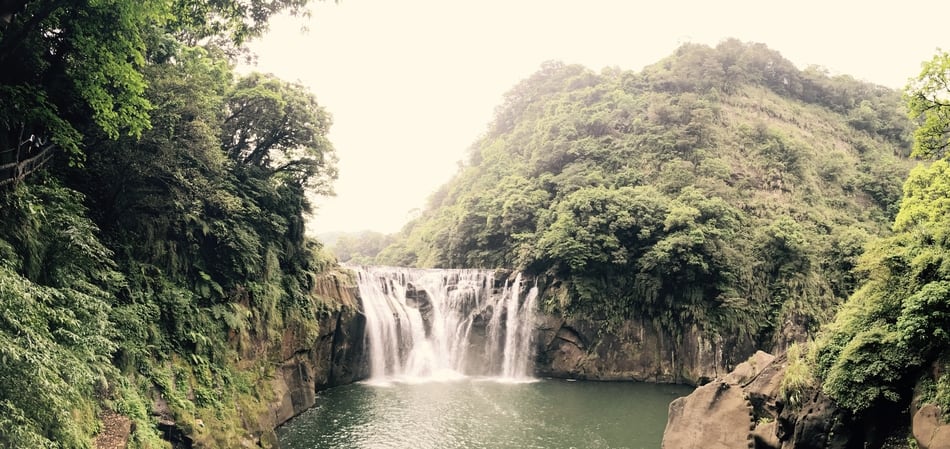
The first is the water. While it should be pretty obvious, during your waterfall rappel, you’ll be getting wet. Like, really wet. While it’s part of the fun, it also adds some unique challenges:
- Cold: Depending on what environment you’re in, getting soaked from head to toe can present serious health risks. Obviously, this isn’t a huge issue if you’re rappelling down a waterfall in the Caribbean. If, however, you plan on trekking through a canyon in Jasper, Alberta, you better be prepared to get drenched in water that is barely above freezing. In this kind of situation, proper dress is essential.
- Terrain: Everything being wet also makes the terrain harder to navigate. For some waterfall rappels, you’ll be suspended in mid-air and won’t have to worry about this. For others, however, you’ll be stepping your way down a rock face that will likely be slippery and slimy. Proper footwear with good traction will help keep you from falling.
- Rope Control: When they get wet, things often become harder to hold on to. This is true for your brake hand when waterfall rappelling, where both the palm of your hand and the surface of the rope can become soaked with water. Added to the numbness that can come with freezing cold water, and this can prevent serious issues in terms or slowing your descent.
There are also certain differences in gear. For a dry rappel, you can use either a dynamic or a static rope, depending on what you have on you. For waterfall rappelling, however, it is essential to use a static rope. Dynamic ropes soak up water between their elastic fibres. Not only will this make the rope heavier, it will also ruin the integrity of the rope. As shown in this article, a rope loses about 70% of its dynamic catching ability when wet. This won’t be a concern during the rappel, as you’re using static motions, but it can have long term affects on the longevity of your rope. Therefor, going with a static rope is always best.
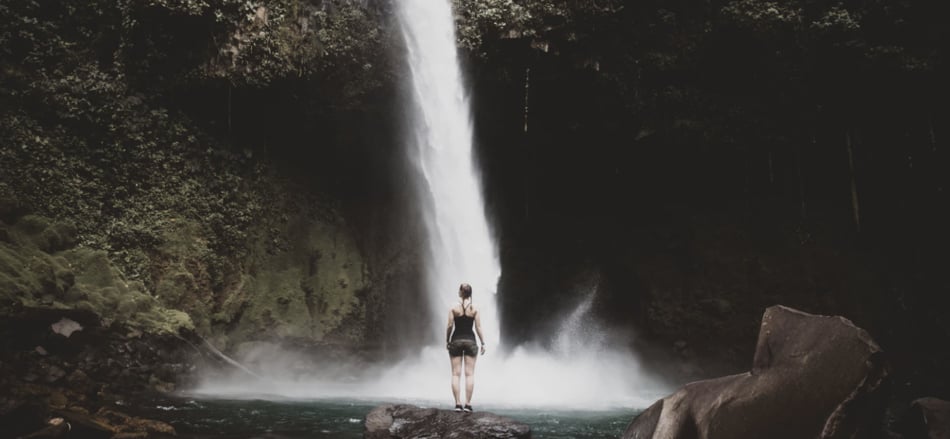
Additionally, waterfall rappels often require specific belay devices to help you get down. While normal belay devices, such as a Black Diamond ATC, will do the trick, there are certain benefits to getting a canyoneering-specific belay device for your waterfall rappel. For one, they often add more grip, which helps deal with the issue of having wet hands. Secondly, they often allow you to adjust the friction on the rope mid-rappel, which can be useful for situations in which you’re traversing over the ledge of a cliff.
Waterfall Rappelling: What to Bring
Just like any activity, having the right gear is essential to performing a waterfall rappel. I talk about this a little above, but now I want to go in to more detail about what to bring on your waterfall rappel.
Clothing: It goes without saying that the clothing you bring will depend on where you’re performing the rappel. If it’s in Australia, you can get away with shorts and a t-shirt. If you’re in cold weather, it might be worth it to invest in a wetsuit to held keep you warm. Either way, whatever you wear should be comfortable and quick-dry, because you’re going to get soaked.
Footwear: As I said above, having the proper grip can make your waterfall rappel a lot more safe. Again, what you wear specifically is weather dependant, but you should always make sure that you have good rubber soles on whatever it is that you chose to rappel in. This will allow for better traction on the rock.
Gear: As I mention above, always use a static rope when waterfall rappelling, and it’s always worth it to at least consider purchasing a canyoneering-specific belay device to help lower you down.
This is far from a comprehensive list, but I hope it provides some basic oversight as to what to bring on your waterfall rappel. The good news is, many tour companies that run waterfall rappelling trips will not only provide you with a gear list, but will often show you exactly how to use everything.
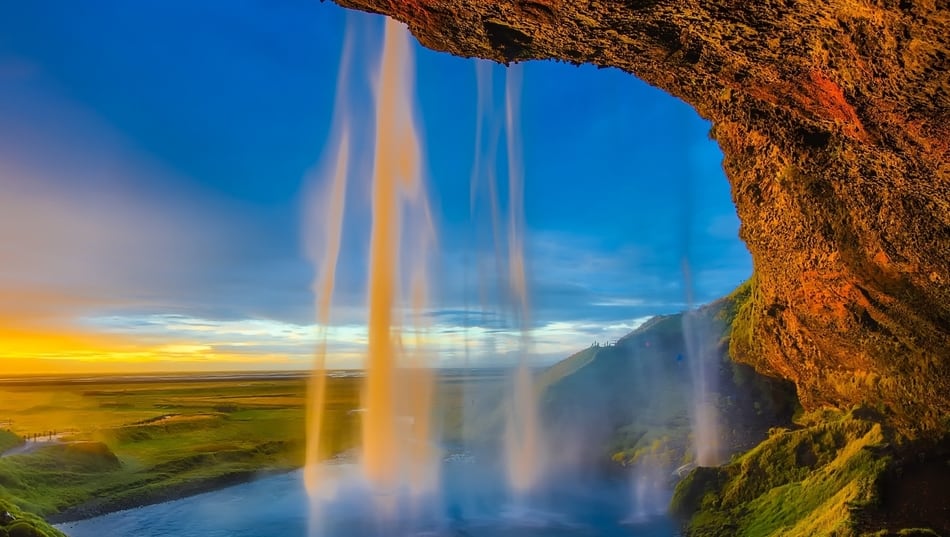
So there you have it! Waterfall rappelling is a rad, unique activity that lets you experience nature in a bit of a different way. When done correctly, it offers an exhilarating experience that you’re sure to not forget.
Related Questions
What are the best places to go waterfall rappelling? For most people, the best places to go waterfall rappelling are ones that are warm and exotic so you can enjoy your trip and create cool memories. For this purpose, locations such as Costa Rica, Maui, and India provide a perfect waterfall rappel destination.
What Is Canyoneering? Canyoneering is the act of moving from the top of a canyon to a lower point— often the bottom— through the us of hiking, swimming, scrambling, and rappelling. It’s an activity that’s quickly gaining in popularity and can offer a full day of unforgettable fun.
